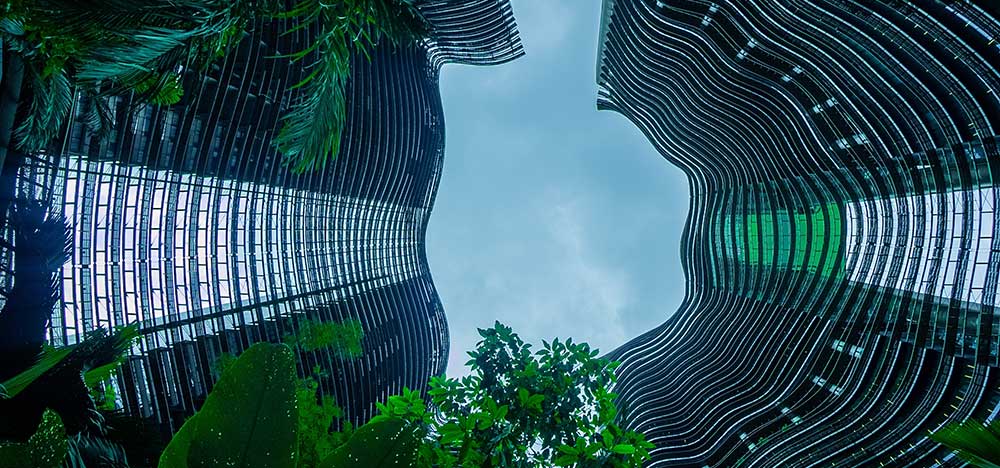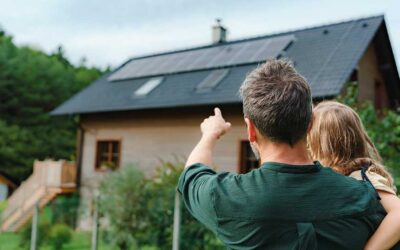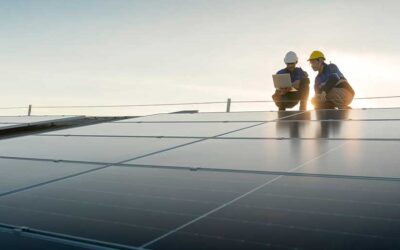Practices That Are Making Construction More Sustainable
The construction industry stands at the forefront of a transformative shift where sustainability reigns supreme. The clanging of hammers and the roar of heavy machinery are now harmonizing with a new, greener tune. The construction landscape is changing, and it’s doing so with a clear purpose — to build a better, more environmentally responsible future.
Sustainability is no longer a buzzword; it’s a driving force reshaping how we conceive, design, and construct buildings and infrastructure. As the world grapples with the pressing challenges of climate change and resource scarcity, the construction sector has emerged as a pivotal player in mitigating these issues.
Within these pages, you’ll discover the latest advancements in sustainable construction equipment, how Building Information Modeling (BIM) revolutionizes design, and strategies to minimize construction waste. We’ll explore water conservation techniques, delve into green certifications, and unveil the role of sustainable landscaping in urban planning. Moreover, we’ll spotlight the importance of community engagement and education in fostering a sustainable construction culture.
But this isn’t just about facts and figures; it’s about the fabric of our built environment, the structures that define our cities and communities. It’s about the collective effort to leave a positive imprint on our planet, to construct with care and conscience.
So, fasten your hard hat and prepare to embark on a journey through the ever-evolving world of sustainable construction. Together, we’ll explore how the construction industry is not just building structures but constructing a sustainable future for all.
Green Building Materials
The choice of building materials plays a pivotal role in reducing the environmental impact of a project. Green building materials are gaining momentum as an integral component of eco-friendly construction. They are not only environmentally responsible but also offer a range of benefits in terms of energy efficiency, durability, and aesthetics.
Green Materials: Building Responsibly
Green building materials encompass a wide array of options catering to different sustainability aspects. Here’s a closer look at some popular choices:
- Recycled Steel: One of the go-to materials for sustainable construction, recycled steel minimizes the carbon footprint by reducing the need for new steel production. It is durable and ideal for structural elements.
- Bamboo: Known for its rapid growth and renewability, bamboo is an excellent alternative to hardwoods. It’s versatile, strong, and aesthetically pleasing, making it a favored choice for flooring, furniture, and structural components.
- Reclaimed Wood: Salvaged from old structures or sources, reclaimed wood provides character and history to a building. It’s often used for flooring, siding, and decorative accents.
- Insulated Concrete Forms (ICFs): ICFs are gaining traction as an energy-efficient alternative to traditional concrete blocks. They offer superior insulation properties, reducing heating and cooling costs.
Benefits of Green Building Materials
Green building materials offer a multitude of advantages, contributing to sustainable construction practices:
- Energy Efficiency: Many of these materials have excellent insulation properties, reducing the need for heating and cooling, thus conserving energy.
- Waste Reduction: Utilizing recycled and reclaimed materials helps divert construction waste from landfills, reducing the overall environmental impact.
- Indoor Air Quality: These materials often emit fewer volatile organic compounds (VOCs), resulting in better indoor air quality for occupants.
- Durability: Green materials tend to be robust and long-lasting, reducing the need for frequent replacements and repairs.
Choosing the Right Materials
Selecting the appropriate green materials depends on the project’s goals, location, and budget. Sustainable building materials are eco-friendly and aesthetically pleasing, ensuring that sustainability doesn’t compromise on design.
As construction projects increasingly emphasize sustainability, green building materials are becoming a staple in the industry. They help reduce the carbon footprint and promote a healthier living environment. The following section will delve into another essential aspect of sustainable construction: energy-efficient design.
Energy-Efficient Design
In today’s construction industry, energy efficiency isn’t just a buzzword; it’s a critical aspect of sustainable building practices. As construction methods continue to evolve, energy-efficient design has emerged as one of the top sustainability trends, reshaping how buildings are conceived and constructed.
The Power of Passive Design
One of the foundational principles of energy-efficient design is passive design. Unlike active systems that require energy input, passive design leverages the natural elements to reduce a building’s energy consumption. This includes strategically positioning windows to maximize natural light and ventilation, reducing the need for artificial lighting and HVAC systems. Passive design elements lower energy bills and create more comfortable living and working environments.
Smart Systems for Smarter Buildings
Incorporating smart systems into building design has become increasingly popular. These systems include intelligent heating, ventilation, air conditioning (HVAC) systems, and energy-efficient lighting solutions. Integrating sensors and automation allows buildings to adapt to occupancy levels and environmental conditions in real time, optimizing energy usage. For example, lights can automatically dim or turn off when a room is unoccupied, and HVAC systems can adjust temperature settings based on occupancy and weather conditions. The result is reduced energy consumption and lower operational costs.
Harvesting Solar Energy
Solar panels have become a ubiquitous feature in energy-efficient building design. The advancements in solar technology have made it more accessible and cost-effective to harness the sun’s power. Buildings are increasingly equipped with rooftop solar panels, which generate clean energy and reduce reliance on fossil fuels. Some projects even incorporate building-integrated photovoltaics (BIPV), where solar panels are seamlessly integrated into the building’s façade, combining functionality with aesthetics.
Charting the Savings
To quantify the impact of energy-efficient design, data-driven analysis is crucial. A well-structured chart can showcase the energy savings achieved through various design strategies. For instance, a bar chart might illustrate the reduction in electricity consumption before and after implementing smart lighting systems. These visual aids provide a clear picture of the tangible benefits of sustainable construction practices.
Energy-efficient design isn’t just about reducing environmental impact; it also offers significant financial advantages. By embracing these strategies, construction professionals can create buildings that are kinder to the planet and the bottom line. In the evolving landscape of sustainable construction, energy-efficient design is a beacon of progress, leading the way to a more sustainable and cost-effective future.
Net-Zero Energy Buildings
The construction industry has seen a remarkable shift toward sustainability, with one of the most significant trends being the development of net-zero energy buildings. These innovative structures are designed to produce as much energy as they consume, making them an environmentally friendly and cost-effective solution for the future.
Net-Zero Energy Buildings in Action
Net-zero energy buildings (NZEBs) are a testament to the marriage of advanced technology, architectural ingenuity, and environmental responsibility. These structures leverage energy-efficient design, renewable energy sources, and cutting-edge technologies to balance energy generation and consumption harmoniously.
For instance, a common feature in NZEBs is the integration of solar panels on rooftops or facades. These panels harness the sun’s power, converting sunlight into electricity that can be used to power the building’s operations. Excess energy can even be stored or redirected back into the grid, reducing reliance on non-renewable sources.
Benefits of Net-Zero Energy Buildings
The advantages of NZEBs extend far beyond their positive impact on the environment. Here are some key benefits:
- Lower Operating Costs: While the initial construction cost may be higher, NZEBs reap significant long-term savings by minimizing energy bills. This cost-effectiveness is a major incentive for both commercial and residential builders.
- Reduced Environmental Footprint: NZEBs are crucial in mitigating climate change by reducing greenhouse gas emissions. They serve as a shining example of sustainable construction practices.
- Energy Security: These buildings are less reliant on external energy sources, providing a degree of energy security, especially during power outages or disruptions.
- Enhanced Comfort: NZEBs often incorporate superior insulation, ventilation, and temperature control systems, ensuring a comfortable and healthy indoor environment for occupants.
The Path to Achieving Net-Zero
To realize the dream of net-zero energy, construction professionals employ several strategies:
- Energy-Efficient Design: Architects and engineers prioritize energy-efficient design principles from the outset, optimizing the building’s orientation, layout, and materials.
- Renewable Energy Integration: As mentioned earlier, integrating renewable energy sources, such as solar panels and wind turbines, is a key component.
- Advanced Insulation: NZEBs have top-notch insulation to reduce heating and cooling loads, leading to less energy consumption.
- Smart Building Management: Cutting-edge systems monitor and control energy usage in real-time.
- Energy Storage: Some NZEBs employ energy storage solutions, like batteries, to store excess energy for later use.
The rise of net-zero energy buildings marks a significant step forward in the construction industry’s commitment to sustainability. These structures reduce carbon footprints and offer financial benefits to owners and operators. As the world faces the challenges of climate change and resource depletion, net-zero energy buildings are a beacon of hope, showcasing what’s possible when innovation and environmental consciousness come together.
Sustainable Equipment: Paving the Way for a Greener Tomorrow
Sustainable construction equipment is, in essence, a breath of fresh air in an industry that has long relied on conventional fuel-guzzling machinery.
These eco-conscious advancements are making waves for several reasons:
- Electrification and Hybridization: Construction equipment manufacturers are progressively transitioning from fossil fuel-powered machinery to electric and hybrid alternatives. These innovations reduce greenhouse gas emissions and lower operational costs over time. Imagine heavy-duty excavators and bulldozers running silently and cleanly on electric power, minimizing air pollution and noise disturbances.
- Reduced Emissions and Fuel Consumption: Sustainable construction equipment boasts significantly reduced emissions, which align with stringent emission standards. In an era where environmental regulations are growing increasingly stringent, these machines are a relief for construction companies striving to comply with eco-friendly guidelines. Moreover, they consume less fuel, translating into substantial cost savings and a smaller carbon footprint.
- Enhanced Efficiency: Sustainability goes hand in hand with efficiency. Modern equipment uses advanced technologies such as telematics and real-time data monitoring. This ensures optimal performance, minimizes downtime, and maximizes resource utilization. Drones, equipped with cameras and sensors, are employed for site surveys and progress tracking, saving time and resources.
- Extended Lifespan and Durability: Sustainable equipment tends to have a longer lifespan due to improved build quality and maintenance practices. This reduces the need for frequent replacements and minimizes waste generation. Companies can expect to recoup their investments over time through lower maintenance costs and increased operational longevity.
- Safety Measures: Sustainable construction equipment is often equipped with enhanced safety features, such as sensors and alarms that prevent accidents on job sites. This prioritization of worker safety aligns with ethical standards and contributes to overall sustainability by minimizing injuries and disruptions.
In summary, the construction industry’s shift towards sustainable equipment is more than just a trend; it’s a pivotal transformation in the quest for eco-conscious construction practices. As construction companies increasingly recognize the economic and environmental benefits of sustainable equipment, the industry moves closer to a greener, more sustainable future. It’s a win-win scenario: reduced emissions, cost savings, and a healthier planet.
BIM (Building Information Modeling)
Building Information Modeling (BIM) stands as a transformative force in sustainable construction trends. BIM is more than just a digital representation of a building’s physical and functional characteristics; it catalyzes eco-friendly construction practices.
BIM and Energy Efficiency
One of BIM’s primary contributions to sustainability is its ability to optimize energy efficiency. Through detailed 3D modeling and simulation, construction teams can analyze the energy performance of a building even before it’s constructed. This technology allows professionals to make informed decisions regarding materials, layouts, and systems, resulting in structures that are not only energy-efficient but also cost-effective.
Visualizing Sustainability with BIM
BIM provides a visual platform for stakeholders to assess and understand the environmental impacts of construction projects. By integrating sustainability metrics into BIM software, users can visualize a building’s carbon footprint, energy usage, and water consumption. This visual representation fosters better-informed decisions and encourages eco-conscious choices throughout the project’s lifecycle.
Streamlining Collaboration and Reducing Waste
Collaboration among architects, engineers, contractors, and subcontractors is pivotal for sustainability. BIM serves as a centralized platform for seamless communication and coordination. This collaborative approach minimizes errors, reduces rework, and decreases construction waste—a significant environmental concern.
BIM for Sustainable Renovations
BIM isn’t limited to new construction. It also plays a vital role in sustainable renovations. Renovation projects can be meticulously planned by creating accurate as-built models of existing structures optimizing resource use and energy efficiency. BIM enables a holistic view of the building’s history, streamlining the renovation process.
The Future of BIM in Sustainable Construction
As sustainability continues to gain momentum, BIM is evolving alongside it. Future iterations of BIM software will likely incorporate advanced energy analysis, carbon accounting, and real-time environmental monitoring. This evolution promises to enhance further the construction industry’s ability to create sustainable, eco-friendly structures.
Incorporating BIM into sustainable construction practices isn’t just a trend; it’s a paradigm shift. With its capacity to optimize energy use, reduce waste, and foster collaboration, BIM is redefining how we build and is a cornerstone in pursuing greener, more sustainable construction practices.
Waste Reduction Strategies
Waste is an inevitable byproduct of progress. However, the construction industry has made significant strides in recent years to reduce its environmental impact through various waste reduction strategies. These initiatives contribute to a cleaner environment and lead to cost savings and improved efficiency.
The Impact of Construction Waste
Before delving into these strategies, it’s essential to understand the scope of construction waste. The industry generates substantial waste, including concrete, wood, metals, and more. In the United States alone, construction and demolition activities account for approximately 600 million tons of waste annually.
Prefabrication and Modular Construction
One of the most effective ways to minimize waste in construction is through prefabrication and modular construction techniques. These methods involve creating building components off-site in a controlled environment, reducing the likelihood of errors and waste generation during on-site assembly.
Prefabrication reduces waste and leads to faster construction times, lower labor costs, and increased project predictability. Additionally, it allows for better resource management by optimizing material usage.
Lean Construction Practices
Lean construction is a philosophy that focuses on eliminating waste in all forms, including time, materials, and labor. It promotes efficient project management, collaborative work environments, and just-in-time deliveries to minimize waste and maximize value.
By applying lean principles, construction projects can reduce overproduction, unnecessary transportation, and excessive inventory, significantly reducing waste generation.
Recycling and Reuse
Construction waste doesn’t always end up in landfills. Many materials can be recycled or reused, reducing the industry’s environmental footprint. Commonly recycled materials include concrete, asphalt, and metals.
Recycling minimizes waste, conserves natural resources, and reduces energy consumption. Many construction projects now incorporate recycling programs and use recycled materials whenever possible.
Waste Tracking and Reporting
Effective waste reduction strategies require careful monitoring and reporting. Construction companies increasingly use digital tools and software to track waste generation and disposal. This data helps identify improvement areas and ensures waste management regulations compliance.
Water Conservation Techniques
Water is a precious resource, and in the construction industry, conserving it is not just environmentally responsible but also financially advantageous. This section explores innovative water conservation techniques that have become integral to modern construction practices.
- Efficient Plumbing and Fixtures
Incorporating water-efficient plumbing systems and fixtures is a fundamental step in reducing water usage on construction sites. Low-flow toilets, faucets, and showerheads significantly reduce water consumption without compromising functionality. These fixtures conserve water and contribute to cost savings throughout the construction process.
- Rainwater Harvesting
Rainwater harvesting has gained prominence as a sustainable water source for construction projects. Construction sites can reduce their reliance on municipal water supplies by collecting and storing rainwater. This harvested rainwater can be used for various purposes, such as site irrigation, dust control, and even concrete mixing, further reducing the project’s environmental footprint.
- Innovative Site Design
Sustainable site design principles can drastically reduce water runoff and promote groundwater recharge. Features like permeable pavements and bioswales help manage stormwater effectively, preventing soil erosion and reducing the burden on local drainage systems.
- Water Recycling Systems
Water recycling systems like greywater recycling are becoming more prevalent in construction. Greywater, which includes wastewater from sinks, showers, and laundry, can be treated and reused for non-potable purposes like site cleanup or flushing toilets. This practice conserves water and minimizes the environmental impact of construction activities.
- Smart Irrigation Systems
For construction projects involving landscaping or green spaces, smart irrigation systems are indispensable. These systems use real-time data, weather forecasts, and soil moisture sensors to optimize irrigation schedules, ensuring that plants receive just the right amount of water minimizing waste.
- Dewatering Techniques
In situations where groundwater intrusion is a challenge, dewatering techniques can be employed. These methods involve removing excess water from the construction site, allowing work to proceed safely and efficiently. Proper dewatering facilitates construction and prevents contamination of local water sources.
- Educational Initiatives
Educating construction workers and site managers about responsible water use is vital. Training programs can raise awareness about the importance of water conservation and teach best practices for minimizing waste during construction activities.
By adopting these water conservation techniques, construction projects can significantly preserve this essential resource while reducing operational costs and environmental impact. As sustainability continues gaining traction in the construction industry, incorporating these practices has become a choice and necessity for responsible and forward-thinking builders.
Green Certifications and Regulations
Adhering to green certifications and regulations has become paramount. These certifications act as roadmaps, guiding construction projects toward environmentally responsible practices. Let’s delve into this critical aspect of the industry.
The LEED Standard: A Benchmark for Sustainability
LEED, or Leadership in Energy and Environmental Design, is among the most recognized and respected green building certifications worldwide. Developed by the U.S. Green Building Council, this certification sets stringent criteria for sustainable building design, construction, and operation.
Under the LEED umbrella, projects can earn different levels of certification – Certified, Silver, Gold, or Platinum – based on their compliance with various sustainability measures. These measures encompass energy efficiency, water conservation, indoor environmental quality, materials selection, and site sustainability.
Builders aiming for LEED certification must carefully plan their projects, selecting eco-friendly materials and energy-efficient systems. They must also consider waste management, green transportation, and innovative design features.
Navigating Green Building Codes
Aside from voluntary certifications like LEED, many regions have adopted green building codes and regulations that enforce sustainable practices. These codes often mandate energy-efficient building designs, renewable energy integration, and water conservation measures.
These regulations serve a dual purpose: They reduce environmental impact and help property owners save on long-term operational costs. Compliance can be demanding, but it is a crucial step toward a greener construction industry.
BREEAM: A Global Alternative to LEED
While LEED is prominent in the United States, the Building Research Establishment Environmental Assessment Method (BREEAM) holds sway in Europe and other parts of the world. BREEAM follows a similar certification model, evaluating buildings on energy, materials, waste, and innovation categories.
Construction projects seeking BREEAM certification must prioritize sustainability from planning to execution, making choices that minimize their environmental footprint.
The Role of Certifications in Sustainable Construction
Green certifications and regulations are more than just badges of honor; they signify a commitment to environmental stewardship and a sustainable future. They also offer tangible benefits, such as reduced energy consumption, lower operating costs, and enhanced property value.
By adhering to these standards, construction companies contribute to a global shift toward sustainable practices. They meet regulatory requirements and inspire others in the industry to follow suit.
Sustainable Landscaping and Urban Planning
Sustainable landscaping and urban planning play pivotal roles in enhancing the environmental footprint of construction projects. They not only beautify the surroundings but also contribute to overall sustainability.
Incorporating Green Roofs and Vertical Gardens
One of the innovative trends in sustainable landscaping is the integration of green roofs and vertical gardens. Green roofs are essentially vegetated layers on top of buildings, offering benefits like improved insulation and reduced energy consumption. They also mitigate urban heat island effects by providing natural cooling. Vertical gardens, on the other hand, utilize vertical spaces to cultivate plants, which can improve air quality and aesthetics. By incorporating these features, construction projects contribute to a healthier, greener urban environment.
Urban Planning for Sustainability
Sustainable urban planning is the foundation for eco-friendly cities. Urban planners increasingly focus on creating pedestrian-friendly spaces, efficient public transportation systems, and mixed-use developments. These initiatives reduce the reliance on automobiles, promote walking and cycling, and reduce greenhouse gas emissions. In addition, sustainable urban planning emphasizes the importance of preserving green spaces, which benefit biodiversity and provide recreational areas for the community.
The Role of Sustainable Landscaping in Stormwater Management
Sustainable landscaping isn’t just about aesthetics; it also plays a crucial role in stormwater management. Permeable pavement, rain gardens, and bioswales are examples of sustainable landscaping techniques that allow rainwater to infiltrate the ground naturally. This helps to reduce the strain on municipal stormwater systems and minimizes the risk of flooding. It’s a win-win for both the environment and the community.
Promoting Biodiversity
Constructing sustainable landscapes isn’t solely about selecting the right plants; it’s also about fostering biodiversity. Native plant species are often chosen because they require less water and maintenance while providing a habitat for local wildlife. Urban planners and landscapers are working together to create green spaces that support pollinators like bees and butterflies, contributing to the broader goal of preserving biodiversity.
Sustainable Urban Projects in Action
The sustainable landscaping and urban planning section wouldn’t be complete without showcasing some real-world examples. From Singapore’s “Gardens by the Bay” to New York City’s High Line, these projects demonstrate how innovative landscaping and urban planning can transform urban environments into sustainable, vibrant spaces.
Incorporating sustainable landscaping and urban planning into construction projects isn’t just a trend; it’s a fundamental shift towards a more environmentally responsible and community-oriented future. It’s about creating spaces that are not only visually appealing but also contribute to a healthier, more sustainable world.
Community Engagement and Education
Community involvement is a pivotal aspect of sustainable construction. In this section, we explore how construction companies engage with local communities and educate their workforce to promote sustainability.
Construction companies recognize that their projects directly impact the neighborhoods and communities in which they operate. Engaging with these communities fosters goodwill and enables better collaboration, ultimately leading to more sustainable construction practices.
Building Trust and Collaboration with Local Communities
Building trust with local communities is the foundation of successful community engagement. Construction companies are taking steps to ensure their projects align with the communities’ needs and concerns. They hold open forums and public meetings to gather input, address concerns, and establish clear lines of communication.
Educational Programs for Construction Workers
Sustainability in construction starts with the workforce. Many construction companies are investing in training and educational programs for their employees. These programs cover various topics, from using eco-friendly construction materials to energy-efficient building techniques.
Interactive Workshops and Training Modules
Companies are organizing interactive workshops and digital training modules to engage workers effectively. Workers learn about the environmental impact of their work and are trained to use sustainable practices on-site.
Promoting Sustainable Practices Beyond the Construction Site
Construction companies are also taking a proactive approach to educate the broader public about sustainability. They organize community events, open houses, and school outreach programs to raise awareness about sustainable building practices and their benefits.




